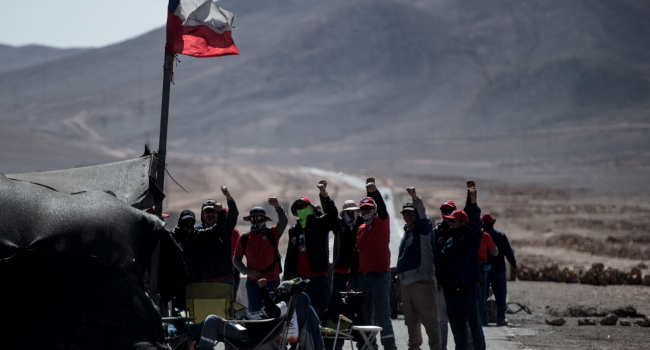World News
Strike at world’s largest copper mine in Chile disrupts operations amid pay dispute

Workers at the Escondida mine in northern Chile, the world’s largest copper mine, have gone on strike following a breakdown in pay negotiations with Australian resources giant BHP.
The mine, which produces about 5% of the world’s copper annually, is a critical source of the metal used in electrical wiring, rechargeable batteries, and numerous other industries.
Despite the strike, BHP has indicated that scaled-back operations will continue with non-union staff implementing contingency plans. Analysts believe that the current global surplus in copper stockpiles may mitigate the immediate impact on the market.
However, there are concerns that if the strike persists for more than a week or two, it could significantly disrupt copper production and potentially affect global supply.
Production ground to a halt at the Escondida mine when workers downed tools for 44 days in 2017, costing BHP $740 million and wiping 1.3 per cent off Chile’s annual economic output.
Encouraged by surging global prices earlier this year, union representatives have sought a bigger slice of profits for the 2,400 workers they reportedly represent at Escondida.
The union said it launched a “legal strike” over unmet demands that included bigger bonuses, shorter work days, and compensation tied to total years worked at the mine.
Media reports in Chile said BHP had offered a one-off bonus of nearly $29,000, lower than the $36,000 demanded.
The buoyant copper prices seen in May this year have sagged in recent months, with significant stockpiles of refined metal building in the depots of China and elsewhere.
“Total stocks at warehouses monitored by the exchanges in London and Shanghai have risen to levels not seen since the depth of the pandemic back in early 2020,” said Saxo Markets commodity analyst Ole Hansen in a recent research note.
“Instead, we have seen inventories monitored by the major futures exchanges continuing to rise at a rapid pace, signalling a period of a major supply/demand mismatch, primarily due to weak demand.”
BHP’s share price in Sydney dropped by around one percent by noon on Wednesday.
Nicknamed the “Big Australian”, BHP has been increasingly eager to snap up new sources of copper.
It was one of the driving factors behind the company’s ultimately failed bid to take over rival Anglo American earlier this year.
– Clean copper –
Copper, an electrical conductor used in wiring, is seen as a bedrock of emerging clean-energy industries.
It is a crucial component in the manufacture of solar panels, electric vehicles, wind turbines and rechargeable batteries.
Copper prices have increased about 400 per cent in the past quarter of a century, and broke US$10,000 a tonne in April for the first time in two years.
Global demand is expected to grow by up to 2.5 per cent a year.
The Escondida mine, meaning “hidden” in English, was named in reference to the bulging ore deposits obscured deep under the barren surface of Chile’s northern Atacama Desert.
BHP owns just under 60 percent of the mine, alongside minority partners Rio Tinto and Japan’s JECO Corp.
Chile accounts for roughly a quarter of the world’s copper, followed by Peru, China, and the Democratic Republic of Congo.
AFP























